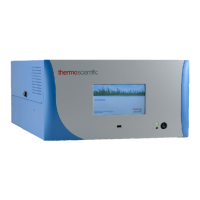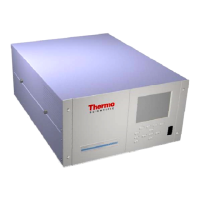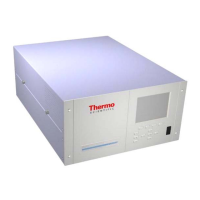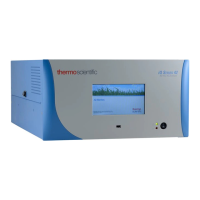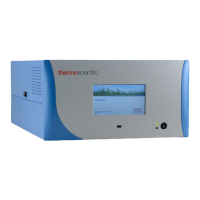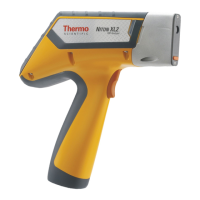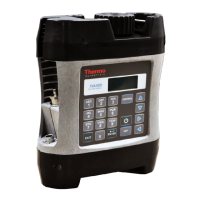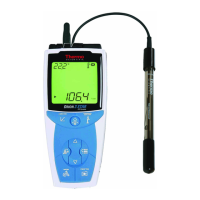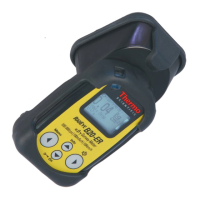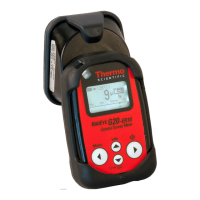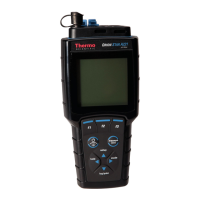What does the Bias voltage alarm mean on Thermo Scientific Measuring Instruments?
- JJohn WagnerSep 12, 2025
If your Thermo Scientific Measuring Instruments shows an alarm for Bias voltage, replace the measurement interface board.
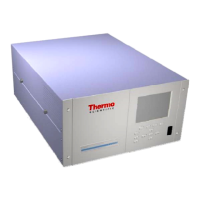
What does the Bias voltage alarm mean on Thermo Scientific Measuring Instruments?
If your Thermo Scientific Measuring Instruments shows an alarm for Bias voltage, replace the measurement interface board.
| Brand | Thermo Scientific |
|---|---|
| Model | 48i |
| Category | Measuring Instruments |
| Language | English |
Lists the technical specifications for the Model 48i CO Analyzer.
Explains the Gas Filter Correlation (GFC) technology used by the Model 48i.
Details the technical specifications of the Model 48i analyzer.
Provides guidance on safely lifting the instrument.
Details the procedure for unpacking and inspecting the instrument.
Outlines the steps for setting up the instrument correctly.
Explains how to connect external devices to the analyzer's I/O ports.
Describes the procedure for starting up the instrument.
Describes the front panel graphics display and navigation.
Explains the function of the front panel pushbuttons.
Provides an overview of the analyzer's menu-driven firmware.
Allows selection of gas units, CO ranges, and custom ranges.
Defines the time period for CO measurement averaging.
Displays and allows adjustment of calibration factors for CO readings.
Used to perform zero and span calibration of the analyzer.
Controls various operational parameters like datalogging and communication.
Provides access to diagnostic information and troubleshooting functions.
Displays monitored items and their alarm status.
Accesses advanced diagnostic functions and adjustments.
Allows configuration of password protection for settings.
Lists necessary apparatus for instrument calibration.
Specifies requirements for the CO calibration gas cylinder.
Details requirements for a contamination-free zero air source.
Discusses instrument preparation and stabilization before calibration.
Outlines the general procedure for calibrating the instrument.
Details the procedure to set the CO reading to zero.
Explains how to adjust the span calibration of the analyzer.
Describes routine checks for maintaining instrument accuracy.
Covers multi-point calibration for different ranges.
How to reset calibration coefficients to default values.
Procedure for adjusting calibration points for multi-point calibration.
Safety guidelines to follow before performing maintenance.
Refers to the servicing chapter for a list of replacement parts.
Instructions for cleaning the external case of the instrument.
Procedure for cleaning the instrument's optical components.
Details the process for replacing the IR source component.
How to inspect and clean the fan filter.
Procedures for testing for leaks and checking the pump.
Step-by-step guide for rebuilding the instrument's pump.
Safety guidelines before performing troubleshooting actions.
Provides general information and checks for instrument problems.
Illustrates internal board connections for troubleshooting.
Details pin configurations for various connectors.
Information on contacting distributors for assistance and service.
Critical safety measures for servicing procedures.
Describes how to update the instrument's firmware.
Guide to enabling and using the instrument's service mode.
Lists major subassemblies and their part numbers for replacement.
Step-by-step instructions for replacing instrument fuses.
Procedure for replacing the IR source component.
Detailed steps for replacing the instrument's pump assembly.
Lists and describes the Model 48i's main hardware components.
Explains the organization and tasks of the processor firmware.
Describes the operation of the instrument's electronic systems.
Details the analog and digital input/output capabilities.
Describes the internal zero/span assembly option.
Describes the O2 sensor option for concentration correction.
Details the function of the internal zero air scrubber.
Information on installing and using the Teflon particulate filter.
Details the I/O expansion board for analog I/O.
Describes different ways to install the analyzer in a rack or on a bench.
Explains the syntax and structure of C-Link commands.
Lists C-Link commands for reporting instrument measurements.
Details C-Link commands for querying and setting alarm limits.
Lists C-Link commands for retrieving diagnostic information.
C-Link commands for configuring and managing data logging.
C-Link commands related to instrument calibration procedures.
C-Link commands for simulating front panel key presses and screen info.
C-Link commands for configuring measurement parameters like ranges.
C-Link commands for configuring hardware settings like contrast.
C-Link commands for managing communication settings like TCP/IP.
C-Link commands for configuring analog and digital I/O.
Defines format specifiers for parsing data responses.
Configures serial port parameters for MODBUS RTU.
Details TCP/IP parameters for MODBUS Ethernet communication.
Explains supported MODBUS function codes for instrument interaction.
Lists MODBUS addresses supported by the Model 48i.
Configures serial port parameters for Gesytec protocol.
Details TCP/IP parameters for Gesytec Ethernet communication.
Sets the instrument address for Gesytec and MODBUS commands.
Lists supported Gesytec commands for instrument control and data query.
Describes status bytes for operating conditions and errors.
